Back to Homepage / Blogs / Jul 2021
French Colonial Vestiges in Laos
The French colonial influence is easily witnessable in the cities we traverse on river cruise
expeditions through Laos. One is Vientiane,
Laos' capital and largest city; the others are Luang Prabang, Laos' former capital, and Pak Lai, approximately the halfway point from Vientiane and Sayaboury, the only Laos province situated entirely left
of the Mekong river.
The French Indochina union was created in 1887 by assimilating French possessions in Vietnam and
Cambodia. At the time, Laos existed as two provinces Haut-Laos and Bas-Laos, which the French
reorganized into ten. While Luang Prabang continued being the royal seat, the colonial government appointed some of their own to the royal court. The
other nine provinces were under direct French rule in Vientiane, with a military post at each province supervised by a resident governor. Taxes were
enforced on the Lao population in order to financially support the colonial government. In 1902, lands to the west of the Mekong river were also
colonized, which today form the Sainyabuli province and part of the Champasak province.
Vientiane
Colonial history
After passing to French rule in 1893, Vientiane was anointed capital of the French protectorate of Laos six years later. Besides rebuilding the city
and restoring Buddhist temples, including Haw Phra Kaew and Pha That Luang, the French left vestiges of colonial rule, seen today in the city's
buildings, streets that bear French names, and stores that use French expressions and words in their banners.
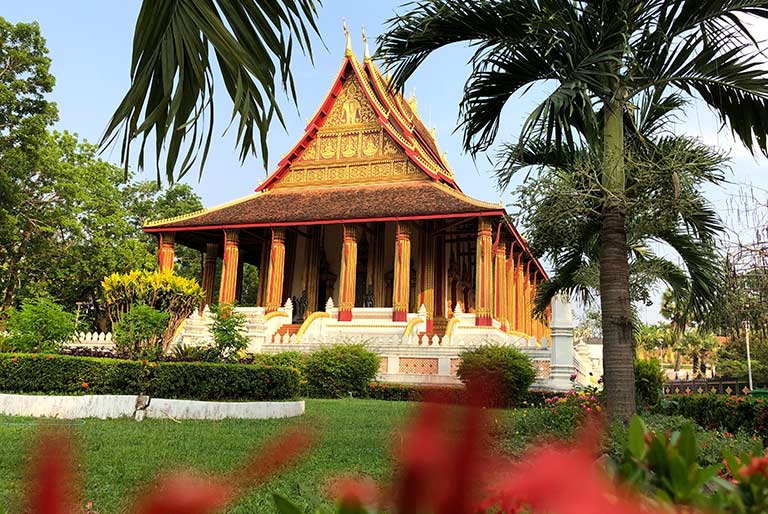
Haw Phra Kaew
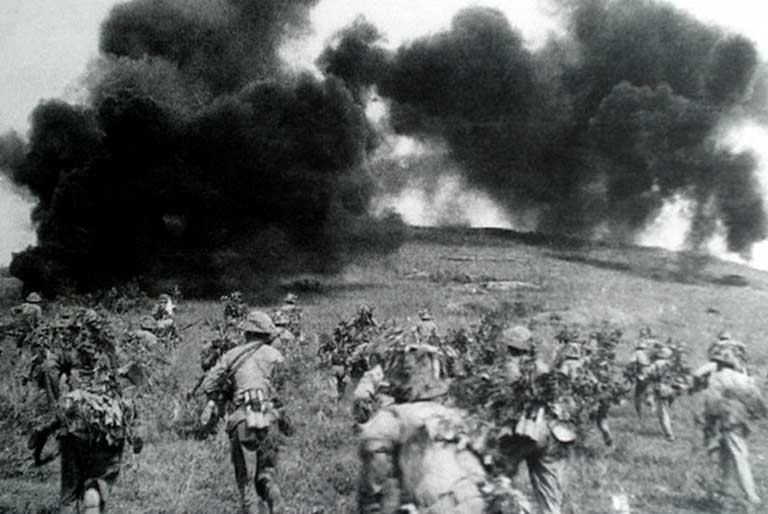
Battle of Dien Bien Phu in 1954
As a major occupier in mainland southeast Asia, France was preferred to the Siamese and Vietnamese, reflected in the fact that there was no revolt
against French rule until after the Battle of Dien Bien Phu in 1954 fought between the French Union's French Far East Expeditionary Corps and Viet Minh
communist revolutionaries.
French colonizers took a laissez-faire attitude to administering Laos. They contributed very little of value, save for a few roads, suboptimal
healthcare, primary education that was restricted to Buddhist pagoda schools and secondary education in French that was provided to a small minority.
They did not industrialize Laos - with 90% of the population remaining engaged in subsistence farming, and a tin mining business established only to fill
French and Vietnamese coffers. Laos contributed no more than 1% of French Indochina's exports. Opium was its major export product, which the French
wasted no time in making a state monopoly.
Vietnamese migration to Laos during the French rule resulted in over 50% of Vientiane's population being Vietnamese. Prior to the Battle of Dien Bien
Phu, the French had planned a Vietnamese immigration to populate the Vientiane Plain, Savannakhet region and Bolaven Plateau, which was foiled after the
undeclared Japanese invasion of Indochina in 1940. If the plan had been successful, then the Lao may have had to forfeit control of their country.
Preservation of French colonial architecture
When you set foot on land and begin your exploration of Vientiane, the French influence will begin to unfold. The most obvious remnants of French
colonialism can be seen in the city's architecture. The older parts of the city along the riverside (the Quai Fa Ngum area) are dotted with small
residences built in French style of architecture. More examples of colonial French architecture are evident in the boulevards close to That Dam and along
Lane Xang Avenue - dubbed Vientiane's Champs Élysées" for its architectural landscape of shutters and red-tiles roofs and Putxai (Lao for Gateway of
Victory), the local version of the Arc de Triomphe. Many former Gallic style homes are in disrepair and being restored by authorities in recognition of
their architectural legacy and tourism impact.
The French integrated their architectural elements into traditional Lao architectural designs and modified them to suit the hot and humid tropical
climate. These styles are observable not only in Vientiane but also Luang Prabang, a World Heritage city. Prior to French occupation, Vientiane comprised
wooden or bamboo stilted homes with thatched roofs, and congregated around the ruins of former palaces and temples. The first French building, the
Résidence Superior was built in 1900 within the compound of the former royal palace.
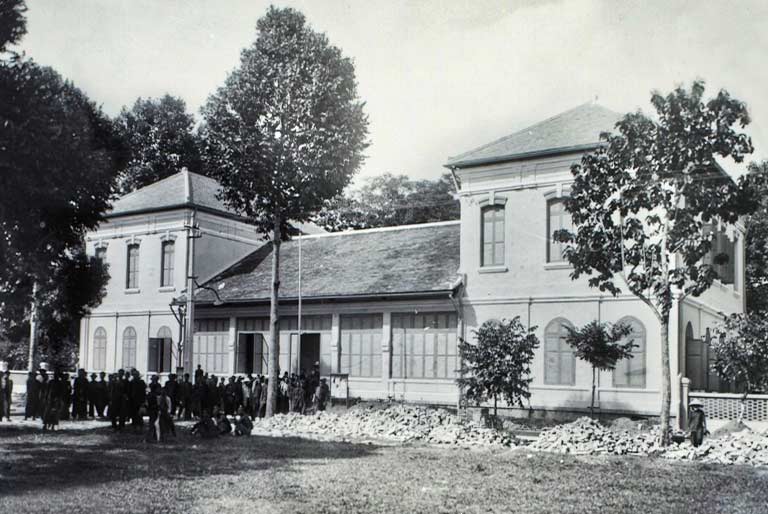
Bureau de la Residence

Hotel du Commissariat
The French also built the Bureau de la Résidence in 1915 (presently, the offices of the Ministry of Information and Culture), the Lycée Auguste Pavie
in 1920 (now part of the School of Medicine), the Hôtel du Commissariat in 1925 (now the Lao National Museum), and the Eglise de Sacré-coeur in 1930.
Additionally, the French constructed brick and stucco villas with pitched tile roofs and wooden shuttered windows in the most heavily populated areas, to
house colonial administrators and their families. In other areas, French architectural styles were modified to align with the climatic conditions, such
as through the addition of verandahs, internal corridors and balconies.
In the 1930s, urban Lao dwellings began drawing from colonial villa styles. Hybrid styles villas combining European designs on stilts or stilted
wooden homes with masonry walls on their lower levels began replacing traditional twin gabled wooden stilted houses.
The city is home to French style cafes and restaurants, where croissants, cappuccinos tablecloths, and copies of Le Monde and Le Canard Enchainé would
make any French native feel at home. The kitchens at Vientiane's swanky French restaurants are helmed by award-winning French chefs who serve up a
delectable spread of foie gras, escargot, crème brûlée, and an excellent selection of wine. You also have the opportunity to savor quintessential French
snacks, pastries and beverages.
Vientiane and Luang Prabang both serve as centers of The Institut Français, which plays an important role in the cultural, artistic and educational
cooperation between Laos and France through culture and education exchange. Inaugurated by former President of France Jacques Chirac in its current
premises on 14 January 1994, it was initially established to promote the French language, and today hosts cultural events, photo exhibitions, children's
cinema, conferences and a variety of musical and performing arts events.
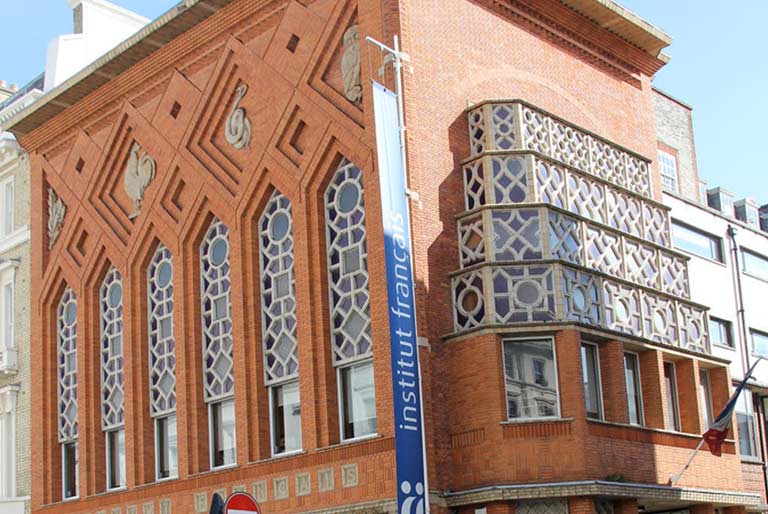
The Institut Franccais
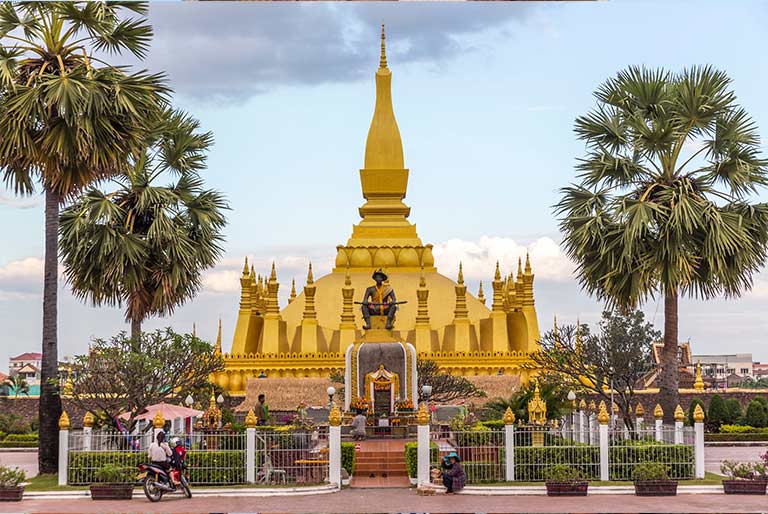
Pha That Luang
Laos is a member state of the Organisation Internationale de la Francophonie, an international organization representing countries and regions where
French is the lingua franca.
Luang Prabang
One of our exciting stopovers, Luang Prabang is popular as a temple city and also famous for its bustling night market and top-quality cafes and
restaurants. On a fun tuk tuk ride, you will explore the city, whose unique culture and flair is imprinted in its Buddhist temples, libraries and the The
Royal Palace Museum, once Laos' Royal Palace.
The Royal Palace is a notable example of colonial era architecture in Luang Prabang, built between 1904 and 1909 by the French for King Sisavangvong
as a replacement to the former palace. An amalgamation of French and Lao architectural styles, the royal palace features a roof in traditional Lao style
that has a gilded spire at its centre, a flight of Italian marble steps above the main entrance, and French French fleur-de-lis emblems ornamenting the
three-headed elephant crest symbolizing the three kingdoms of Laos. The palace interiors are a curious blend of European and Asian design elements.
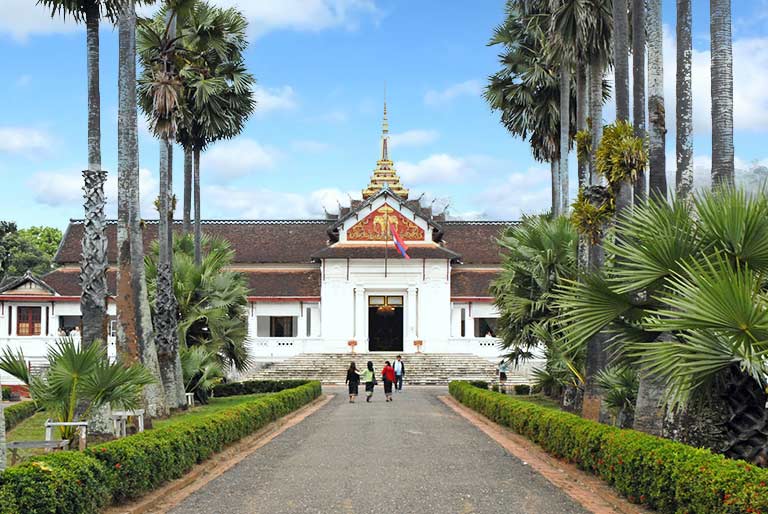
The Royal Palace Museum
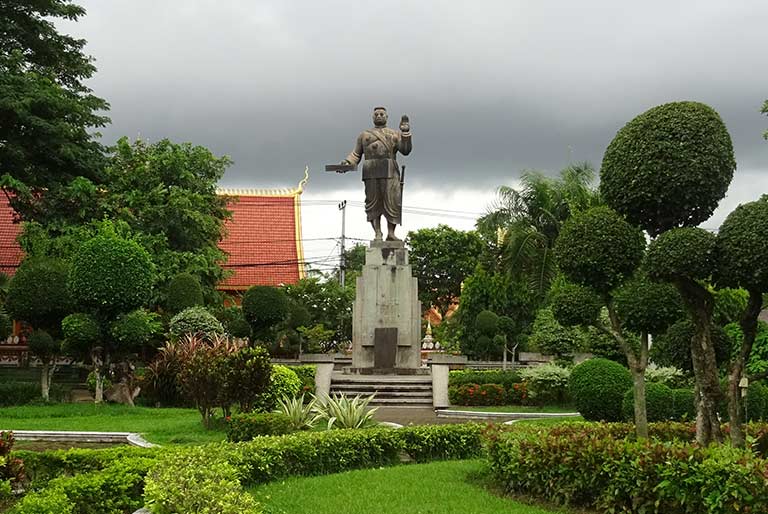
King Sisavang Vong Park
The French introduced secular building styles to the city, and many colonial style buildings dot the city's old town area. Among them are renovated
buildings repurposed as hotels, guest houses, restaurants and massage parlors, while others are on UNESCO World Heritage Center's conservation list. A
number of new buildings in Luang Prabang are influenced by French colonial style, with hints of Chinese architecture that emerged from the Vietnamese
workers hired to implement colonial-era constructions. The laborers built and resided in shophouses that faced the streets.
Laotian aristocracy also moved into masonry residences inspired by French, Vietnamese, European and Chinese architectural styles and technical
innovations. While previously, bricks were used only in temple constructions, the French introduced their use in administrative buildings and residences,
building two-story villas all over the city. The impeccably preserved villas of brick, wood and stucco from decades ago feature high ceilings, shuttered
louvres and spacious wooden balconies.
Pak Lai
Originating on the banks of the Mekong, Pak Lai (or Pak Lay) is a town in west Laos, best known for its elephant festival in South East Asia, the biggest of its kind in southeast Asia, and usually held in February.
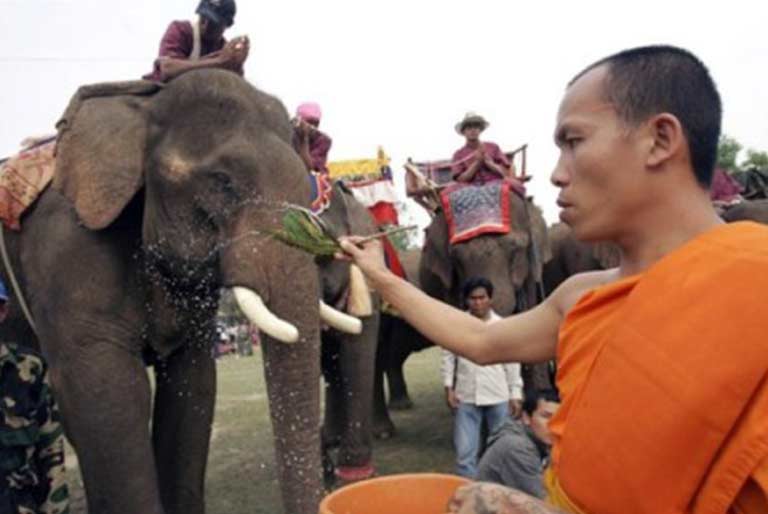
Elephant Festival

King Sisavang Vatthana
The ethnic Khmu from Burma arrived in Pak Lai about 500 years ago. In 1544, the city became a part of
the unified Lao Kingdom of Lan Xang (1353-1707), and then fell to the Siamese, until the French colonized it in 1904. Pak Lai was also the secondary
residence of Lao's last king Sisavang Vatthana (1907- 1978).
Serving as an easy link between Vientiane and Luang Prabang, Pak Lai was an important commercial center in the 19th century. Road communications in
the city have improved greatly since then, with a new bridge opening for traffic at the end of 2017.
Most of the colonial era architecture here was destroyed in a fire, leaving behind a French prison, the 120-year old royal residence, and a few
houses. The streets overlooking the Mekong are still home to some restaurants and guesthouses from a past era, enveloping the area in an old-world
charm.
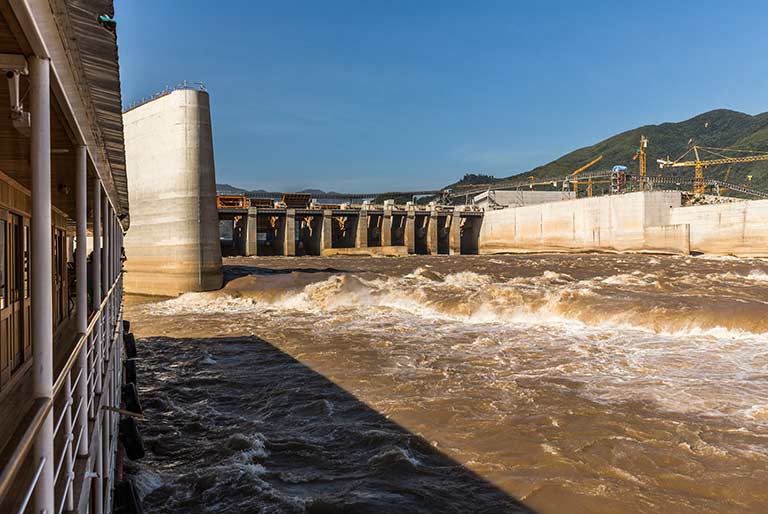
Xayabury Dam
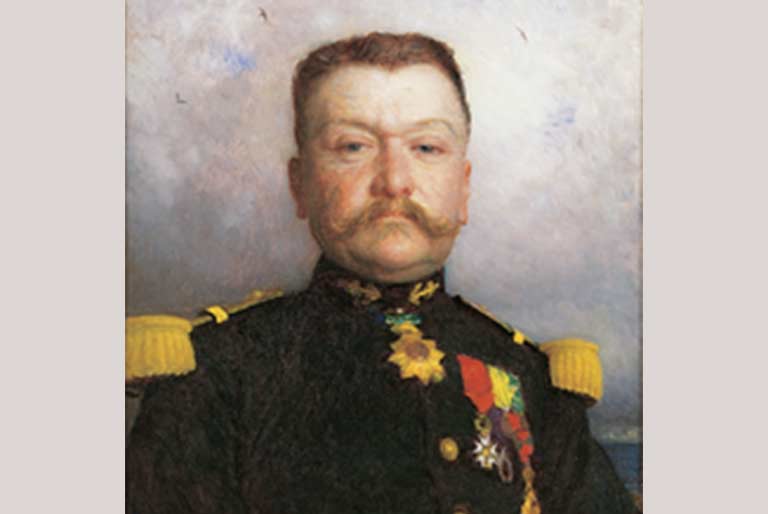
General Leon de Beylie
On a journey through Xayabury Dam from Luang Prabang to Pak Lai lies the remains of the French
monument La Grandière. The monument commemorates the sinking of the similarly-named gunboat that set sail in Saigon in 1893, and played an important role
in the history of the Mekong's exploration, participating in reconnaissance missions on the river, traversing the treacherous rapids of Tang Ho on the
Burma-China border, and being the first to cross the deadly Keng Thong Soum rapids in 1895, which ironically, was to become her resting place fifteen
years later. On July15, 1910, the La Grandière sank at Ken Thong Soum during a sojourn between Luang Prabang and Vientiane. It resulted in the
casualties of General Léon de Beylié and Dr. Vincent Rouffiandis, whose mortal remains were returned to Saigon. The incident was grieved throughout
Indochina. The La Grandière stupa was built in honor of the legendary steamboat, on a hill near the site of the incident on the Mekong rim.